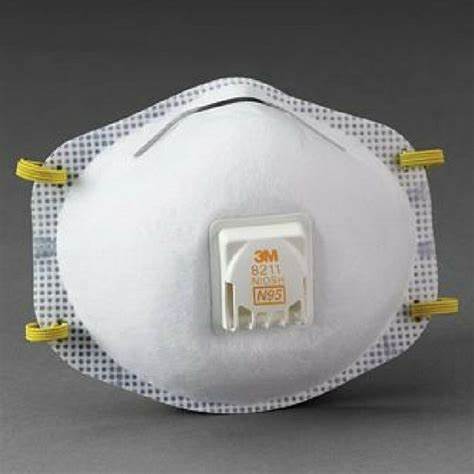Guidline For Choosing and Wearing N95 Respirators and Surgical Masks

N95 respirators and surgical masks (face masks) are examples of personal protective equipment that are used to protect the wearer from airborne particles and from liquid contaminating the face. Centers for Disease Control and Prevention (CDC) National Institute for Occupational Safety and Health (NIOSH) and Occupational Safety and Health Administration (OSHA) also regulate N95 respirators.
The Centers for Disease Control and Prevention (CDC) does not recommend that the general public wear N95 respirators to protect themselves from respiratory diseases, including coronavirus (COVID-19). Those are critical supplies that must continue to be reserved for health care workers and other medical first responders, as recommended by current CDC guidance.
Here are step-by-step instructions for wearing an N95 Face Mask:
1、Choosing Your Face Mask
Choose an N95 face mask to filter out particles in the air. The number refers to the percentage of particles that the mask can filter out. The N95 mask filters out 95% of dust and particulates.
Try on different sizes to get the best fit. Depending on the particular N95 mask you choose, available sizes range from extra small and small to medium and large.
Check with your doctor if you have a respiratory or cardiac condition.Talk to your doctor before using if you have any of the following conditions:
Breathing problems;
Emphysema;
Chronic obstructive pulmonary disease (COPD);
Asthma;
Cardio-pulmonary;
Immune compromised medical condition problems;
Buy a NIOSH-certified N95 face mask from hardware stores or online.
Stock up on face masks so you’ll be ready when you need them. Face masks tend to have large spikes in demand and sell out fast during certain times, such as during an outbreak of an infectious illness or when a region experiences intense pollution.
2、Fitting Your Mask Properly
Trim your facial hair before wearing your mask, when possible;
Wash your hands well before putting on your mask;
Cup the mask in one hand and place it over your mouth and nose;
Pull the bottom and top straps over your head;
Mold the nose piece around the bridge of your nose;
Look for alternate solutions for children;
3、Checking the Seal and Removing Your Mask
Breathe through the mask and test for leaks;
Remove your mask by pulling the straps over the top of your head;
Throw away your mask if you used it in a medical setting;
Re-wear your mask as long as it stays dry and fits tightly;
2020-05-18 17:44

